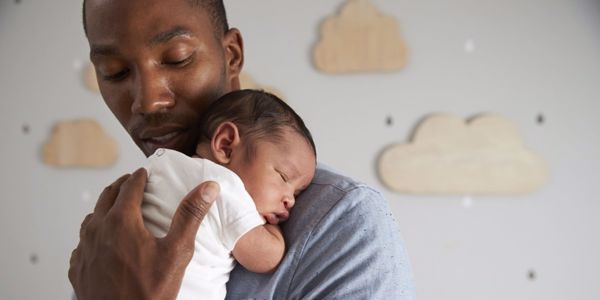As a new parent, you want to do everything in your power to ensure your baby is healthy and happy, including creating a safe sleep environment for your little one.
A safe sleep routine is essential to reduce the risk of Sudden Infant Death Syndrome (SIDS) and other sleep-related hazards, such as cot death. In this article, we'll guide you through the steps to establish a safe sleep routine for your baby, with tips recommended by the NHS and the Lullaby Trust:
1. Follow the “Back to Sleep” Advice
One of the most crucial things you can do to protect your baby's sleep safety is follow the "back to sleep" advice on sleeping position. This means putting your baby on their back to sleep, not on their front or side, as this reduces the risk of Sudden Infant Death Syndrome (SIDS). The risk of SIDS is increased when your little one is left to sleep on their front or side.
2. Use a Firm, Flat Sleep Surface
When choosing the safest sleep environment for your baby, there are a few things to consider. The safest place for a baby to sleep is in their own cot or Moses basket, which meets current safety standards. The surface where your baby sleeps should be firm, flat, and free from loose bedding, pillows, or toys that could pose a risk of suffocation.
3. Keep the Sleeping Area Cool and Free From Hazards
Babies sleep best in a cool, well-ventilated room. The ideal temperature for a baby’s room is between 16-20°C, and it helps to keep a thermometer nearby to ensure the room isn’t too hot or cold.
Avoid using duvets, blankets, or pillows in the sleeping area, as these can pose a risk of suffocation. Ensure that any cords or wires from monitors, blinds or curtains in the same room are safely out of reach.
4. Follow a Consistent Bedtime Routine
Establishing a consistent bedtime routine can help your baby to settle down for sleep. This might include a bath, a bedtime story, or a lullaby. Keep the routine simple and consistent, and try to start it at the same time each night.
5. Watch for Signs of Tiredness
Newborns have short sleep cycles and can become tired and fussy after just a short period of being awake. Watch for signs of tiredness, such as yawning, rubbing their eyes, or becoming fussy and irritable. Putting your baby down to sleep at the first signs of tiredness rather than waiting until they are extremely tired can help them to settle down more easily.
6. Allow Your Baby to Self-Soothe
While it can be tempting to rock or cuddle your baby to sleep, allowing them to learn to self-soothe is important. This means letting them fall asleep independently rather than relying on external stimulation or comfort. This can help your baby to develop healthy sleep habits and improve their ability to fall asleep independently long-term.
7. Be Patient and Flexible
Newborns have unpredictable sleep patterns, and it can take time to establish a consistent sleep routine. Be patient and flexible, and don’t be afraid to adjust your routine as needed. Remember that every baby is different, and what works for one baby may not work for another! Take the time to learn your little one’s needs, and you’ll find the perfect routine that works for both of you.
Newborn babies need a lot of sleep, but their sleep patterns can be unpredictable and irregular in the first few months! Don’t feel defeated if you haven’t got a sleep schedule down right away.
By following safe sleep tips recommended by the NHS and the Lullaby Trust, such as placing your baby on their back to sleep and using a firm and flat sleep surface, you can help your baby to develop healthy sleep habits and reduce the risk of sleep-related conditions such as SIDS. Remember to be patient and flexible, and don’t hesitate to seek support if you’re struggling with your baby’s sleep.
For more advice on getting that routine nailed down, see our Tips for Sleep Training Your Baby.





